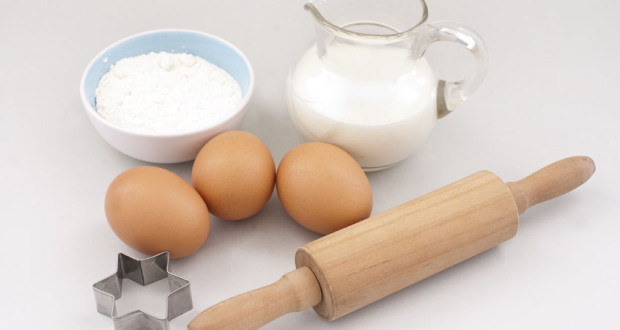A lot of people like to bake for a hobby, and even more love to munch on baked treats. As appealing as baked items might be to your taste buds, there’s no denying that a lot of these items have a negative impact on the body. Baked goods are frequently packed with calories, meaning that they can quickly thicken waistlines if consumed frequently (something that tends to happen during the holiday season). Fortunately, there are several simple yet effective methods for reducing the amount of calories in baking recipes.
Use Whole Wheat Flour – Whether you’re making cookies, cakes, muffins or brownies, chances are that the recipe you’re using will include white flour. Try replacing half of the white flour in the recipe with whole-wheat flour. This substitute has white flour beat when it comes to this fiber, magnesium and selenium content.
Put in Less of the Sweet Stuff – Sugar is key part of nearly all recipes, to the point that it’s difficult to imagine baking without it. While removing this ingredient entirely isn’t a realistic option, you might be able to get away with using 3/4th of the required amount of sugar. Just one tablespoon of sugar contains 48 calories; this means that by cutting out a quarter cup of sugar from the mix, you’ll remove 192 calories from your finished product.
Pick Cocoa over Chocolate – At first glance, there might not appear to be much of a difference between chocolate and cocoa. In fact, cocoa has much less in the way of saturated fat than milk chocolate chips or bars. One tablespoon of dry, unsweetened cocoa powder contains only about 0.4 grams of saturated fat and just 12 calories. In comparison, some brands of milk chocolate chips have 2½ grams of saturated fat and 70 calories in a single tablespoon.
Find Replacements For Butter and Margarine – Like sugar, fats have a poor overall reputation. And like sugar, many recipes require sizable amounts of certain fats to be thrown into the equation. There are multiple reasons as to why fats are so commonplace among baked goods. For starters, they give these items a tender and light texture by weakening gluten bonds. They also allow heat to flow through food during the cooking process, and help give baked products their distinctive brownish tinge.
Oftentimes this fat comes in the form of butter and margarine, two items that are not exactly known for their nutritional value. The good news is that large amounts of these ingredients can be replaced with healthier alternatives. For most recipes, you can swap up to half of recipe’s butter or margarine with substitutes like fat-free sour cream, low-fat yogurt, fat-free sour cream or light cream cheese.
Make Fewer Portions – This is an easy one – simply make fewer cookies, brownies or muffins than what is called for by the recipe. If a recipe makes 16 brownies, you can easily make eight instead by halving the amount of listed ingredients. This will ensure that you’ll have fewer leftover treats to snack on in the following days.
Limit the Amount of “Throw-Ins” – A good number of recipes use certain ingredients largely for their cosmetic effects. For example, a recipe for a double layer cake might call for frosting to be added on the top, middle and sides of the cake. Likewise, some pie recipes involve adding butter to the pie’s crusts, whereas chocolate chip cookies are often made with two to three cups of chocolate chips.
Instead of following recipes to a tee, try and limit the amount of the less-than-necessary ingredients you use. This can have a bigger impact than you might think; every tablespoon of chocolate chips carries roughly 50 calories, while using two fewer teaspoons of frosting can cut 130 calories from baked foods.
Swap Whole Milk for Skim – Many people opt for skim milk over whole milk due to its lack of calories and saturated fat. One 8 ounce glass of whole milk, for instance, has approximately 136 calories and 4.23 grams of saturated fat. Skim milk, in contrast, contains roughly 80 calories and 0.27 grams of saturated fat in the same serving size. While this substitute may cause the end product to be somewhat dry and tough, in most cases you shouldn’t notice that much of difference.
 Natural Knowledge 24/7 Educate yourself with nutrition, health and fitness knowledge.
Natural Knowledge 24/7 Educate yourself with nutrition, health and fitness knowledge.






